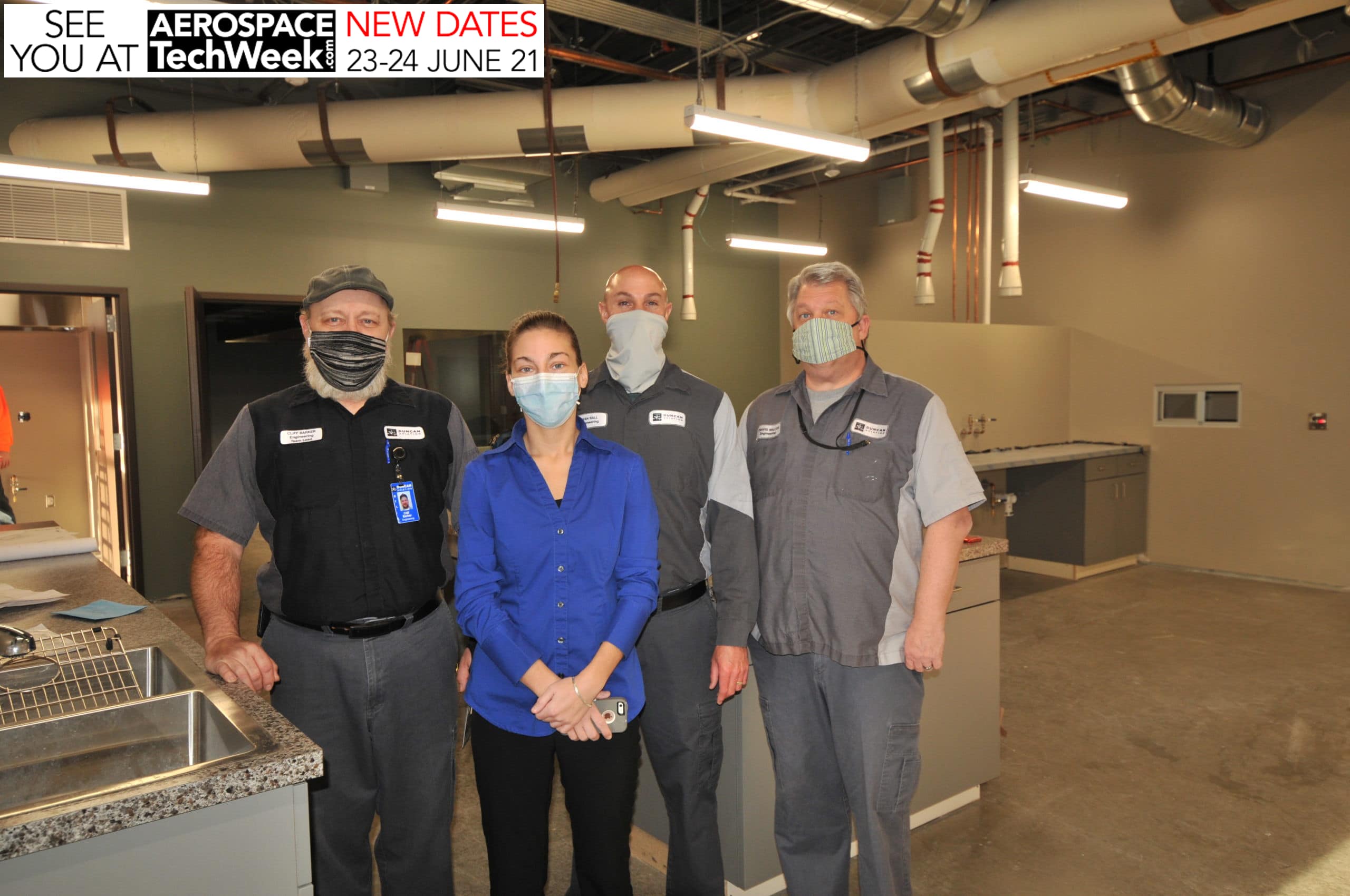Construction on the new Flammability Lab at the Duncan Aviation full-service facility in Battle Creek, Mich., will be completed next week. Duncan says their Engineering & Certification Services is not only expanding the size of its Burn Lab, it is also expanding its testing capabilities to include the NexGen or Sonic Burner test (also known as the FAR 25.853 (b) Fire-Blocking test).
“The techs needed more space to accommodate the new test equipment and to adequately ventilate the lab so the air is safe for employees,” says Michael Hill, enterprise manager of Engineering .
When construction is complete, Cliff Barker, team leader, and Travis Wilcox and Ryan Ball, flammability technicians, will move the test equipment from the old space to the new, set it up, calibrate it, and test it to make sure it works properly. The team will move and set up one test chamber at a time so Duncan Aviation’s flammability testing capabilities will continue during the move.
“Currently, we have two vertical test units and a multi-use test unit for horizontal, 45-degree and wire testing,” says Barker. “After those have been installed and are fully functional, we’ll install the new Sonic Burner (Fire-Block) test equipment and begin conducting those tests as well.”
The Flammability Lab team will conduct calibration and R&D tests to make the necessary adjustments on the Sonic Burner for several weeks. When they’re finished, Duncan Aviation’s Organization Designation Authorization’s (ODA’s) Engineer Structures-Flammability unit members (Barker and Wilcox) will submit an application to the FAA seeking the authority to issue approvals on FAR 25.853 (b) Fireblock Testing.
FAR 25.853 (b) Fireblock Testing was mandated by the FAA in the mid-1980s for aircraft flying under Part 25, and it was amended in 1995 for all aircraft operating under Part 135; however, the former Oil Burner seat-cushion test did not apply to many of Duncan Aviation’s customers at the time. Now, as more owner/operators are flying aircraft that must meet and maintain the Amendment 25-59 requirements, or they opt to operate under Part 135 rules, testing has become an additional safety feature. Duncan Aviation’s ability to provide in-house testing will minimize the turntime and ensure we meet the customers’ schedules.
“Once the FAA has granted Duncan Aviation’s ODA unit members authority for approvals, we’ll begin performing the new tests,” says Barker.
Barker has an A&P certificate, an Inspection Authorization (IA) certificate and an FAA-ODA certificate for Engineering Structures/Flammability and Manufacturing Inspection and Conformity. He was instrumental in the development of the Duncan Aviation Flammability Lab in 1995.
Wilcox also holds an A&P certificate and an FAA-ODA certificate for Engineering Structures/Flammability and Manufacturing Inspection and Conformity and has worked in the Flammability Lab for 12 years. Ball has worked in the Flammability Lab for 15 years.
The team plans to have the equipment set up and operating by March 2021. Performing these burn tests in-house means neither Duncan Aviation nor its customers will have to wait for results to ship from other test labs, nor will they be subject to another lab’s scheduling priorities. Because the tests are done in-house, customers will get their test results directly from their Duncan Aviation project manager as part of their delivery package, providing a single point-of-contact for all of their Flammability test data.
“Our in-house testing capabilities will reduce wait times for results by several days,” says Barker. “Our customers are welcome to visit the lab and ask questions, as well.”
